“Jaguar races only to sell cars. I sell cars only to be racing.” – Enzo Ferrari, in Ferrari (2023)
In the life of Enzo Ferrari, 1957 was a fraught year – not to mention a tragic one – amid an especially dangerous era of racing. It’s the moment in history, covering a few brief but critical months, when director Michael Mann chose to set his biopic Ferrari. At this time, Enzo finds both his company and his personal relationships in peril.

When the film begins, we find Enzo (Adam Driver) struggling with his volatile marriage to Laura (Penélope Cruz, the film’s MVP), a not-so-secret second family with Lina Lardi (Shailene Woodley) and their young son, Piero, who seeks recognition from his father. Meanwhile, his namesake business is on the brink of failure. The year prior, Enzo’s son Alfredo “Dino” Ferrari passed away at just 24 years old, and the loss casts a shadow over both him and Laura.
To save Ferrari, Enzo’s business manager, Cuoghi (Giuseppe Bonifati), tells him he must win Italy’s Mille Miglia, a sports car endurance race covering about 1000 miles. If successful, he can attract partners like Henry Ford II or Fiat’s Gianni Agnelli, and he can sell more cars, and the business will survive. (As the famous NASCAR adage goes, automakers had a “Win on Sunday, sell on Monday” mentality) The difficult circumstances of these months – like motorsport itself – serve as a crucible for the man and the company.
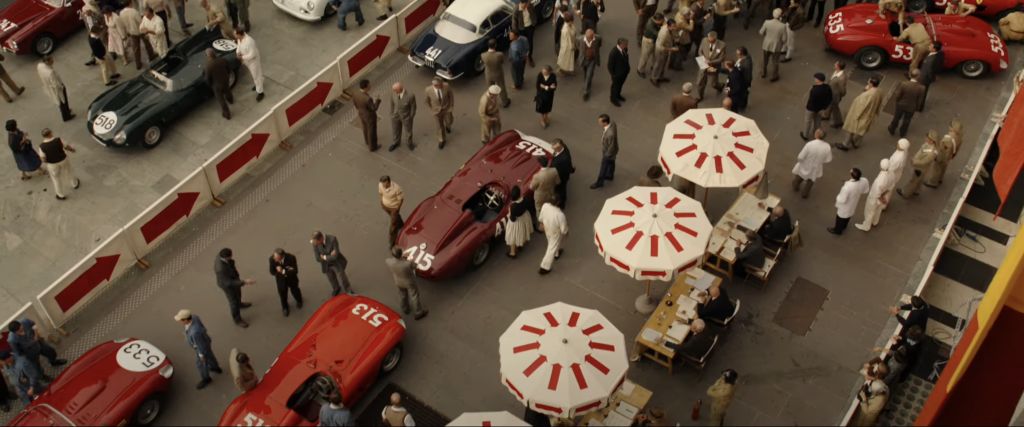
Making Ferrari was, for Michael Mann, a dream that has survived development hell since the ‘90s. (Screenwriter Troy Kennedy Martin, who adapted the script from Brock Yates’ Enzo Ferrari: The Man and the Machine, sadly passed in 2009.) Anyone familiar with his filmography will recognise that the subject matter is tailor-made to the filmmaker’s interests, from its fast cars to Mann’s particular brand of romanticised (and often destructive) masculinity embodied by taciturn, driven, professional men. Enzo Ferrari was a self-made man, perhaps the ultimate example of the type, who forged and shaped himself like the metal of his cars.
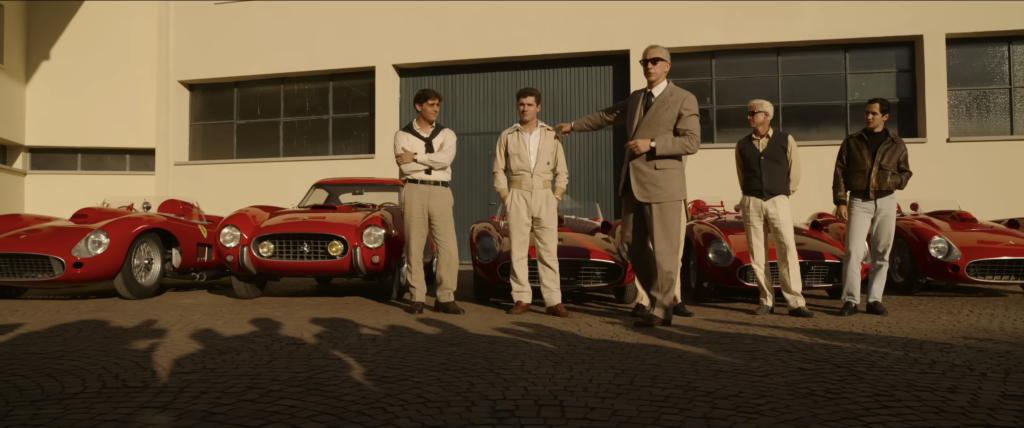
Though Enzo was in control when it came to his business, his personal life was in chaos. Ferrari thus delivers on the domestic drama front – or rather the flavour of domestic melodrama that serves as a recurring theme in Mann’s movies. In the past, some critics have written off this aspect of Mann’s work as extraneous, but Ferrari underscores that it’s a feature, not a bug; Mann adores a love storey, however imperfect or troubled, as much as he adores the obsessive man archetype. In this context Lina Lardi is never portrayed as a mistress but rather as Enzo’s true love, and scenes with the two characters together feel lighter, warmer, homier. As for Laura, she is essential to Enzo’s greatness – an equal partner from the start who co-founded Ferrari with her husband and continues to contribute to its success. It’s a refreshing departure from the familiar wife trope in many biopics about famous men, which frequently depicts some kind of harpy working in direct opposition to her husband’s potential, his ambition, his brilliance.
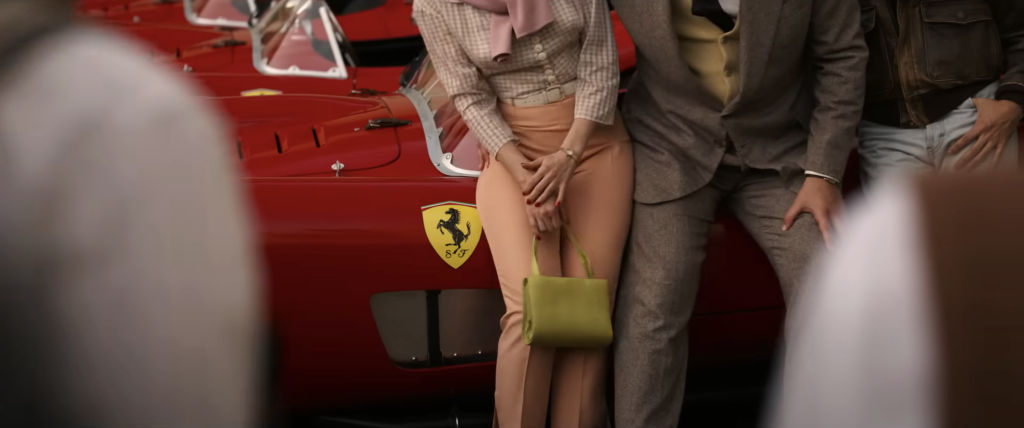
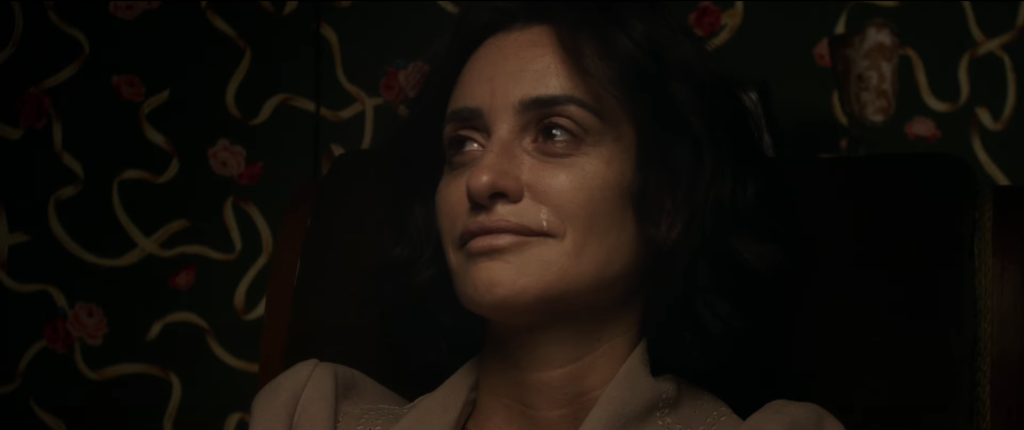
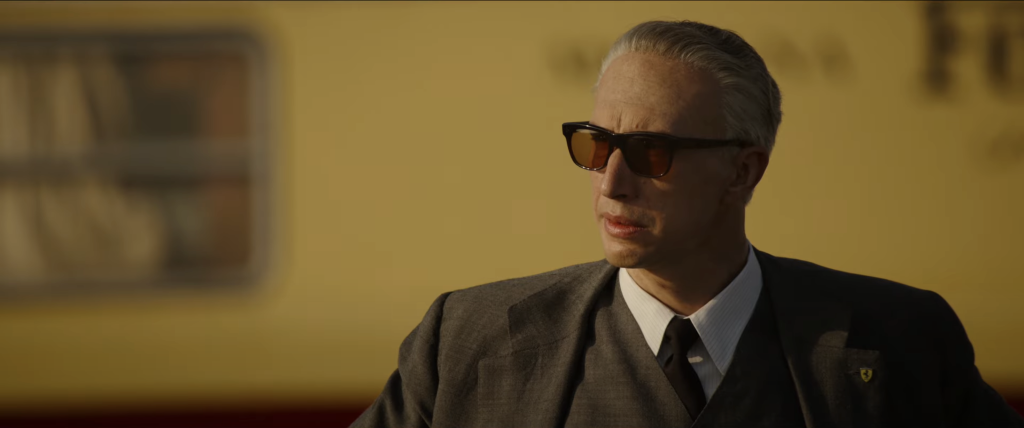
But Laura struggles with her own emotional turmoil, also locked into her grief over Dino’s passing. Cruz as Laura is both controlled and (delightfully) unhinged; she is smart and savvy, but not above firing a gun in her husband’s general direction to make a point. She is every bit as complicated, contradictory, and powerful as Enzo, and it comes across as a shame that she never gets her proper recognition or respect. (Nor did the real Laura Ferrari.) Cruz expresses all of this in her performance and, together, she and Adam Driver capture the wildness of Laura’s and Enzo’s relationship, the way they were simultaneously attracted to and repelled by each other. Driver’s Enzo mostly keeps us at a distance throughout the film, but Cruz’s Laura feels vital, fully dimensional, viscerally real.
And the cars! They are shot lovingly, beautifully, more like works of art than mere machines. The film showcases Ferrari 335 S, Ferrari 315 S, Ferrari 250 GT, Lancia-Ferrari D50. (Enzo, well-known for his love of Peugeots, drives a decidedly less sexy Peugeot 403.) Gearheads and racing enthusiasts will be relieved to hear that no real vintage Ferraris or Maseratis were harmed in the making of this film; action shots were performed using production-built replicas rendered from LiDAR (i.e. 3D) scans of the real thing. (Even if production had wanted to use them, it would have been prohibitively expensive to do so.)
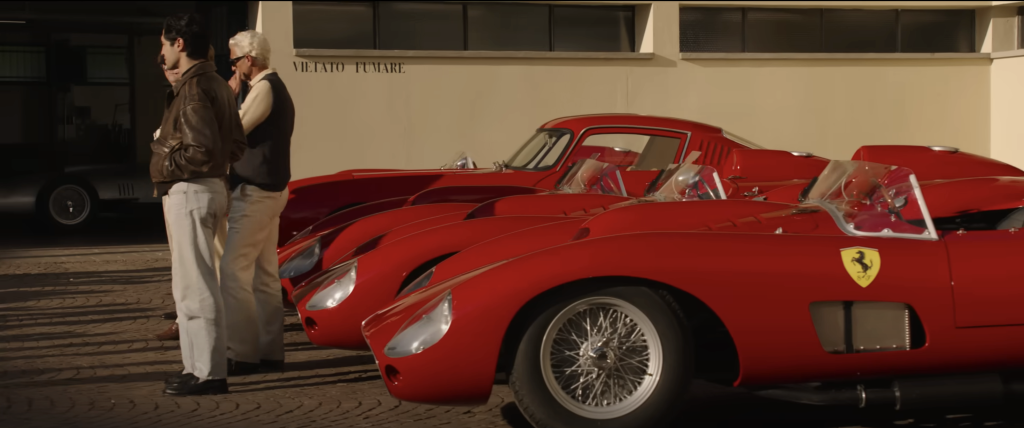
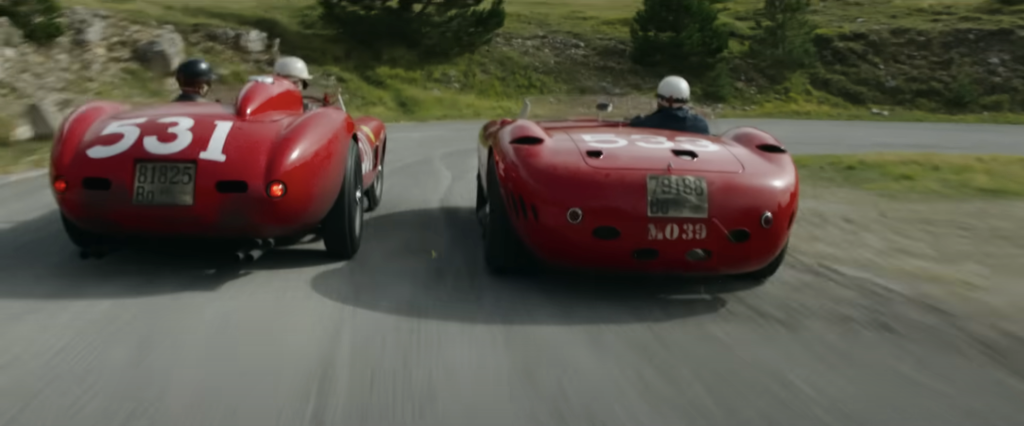
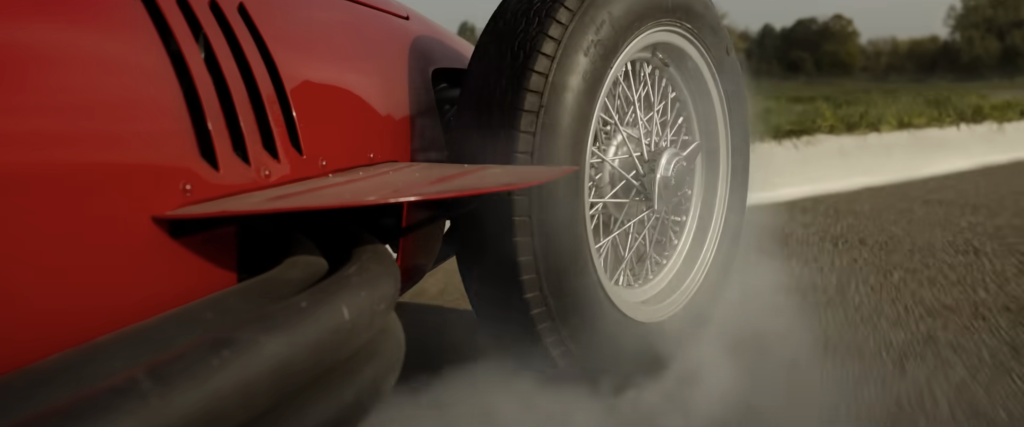
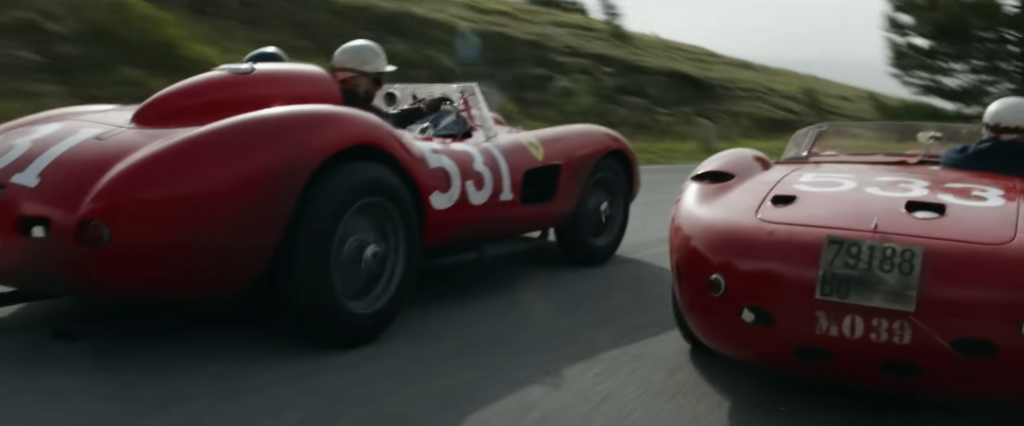
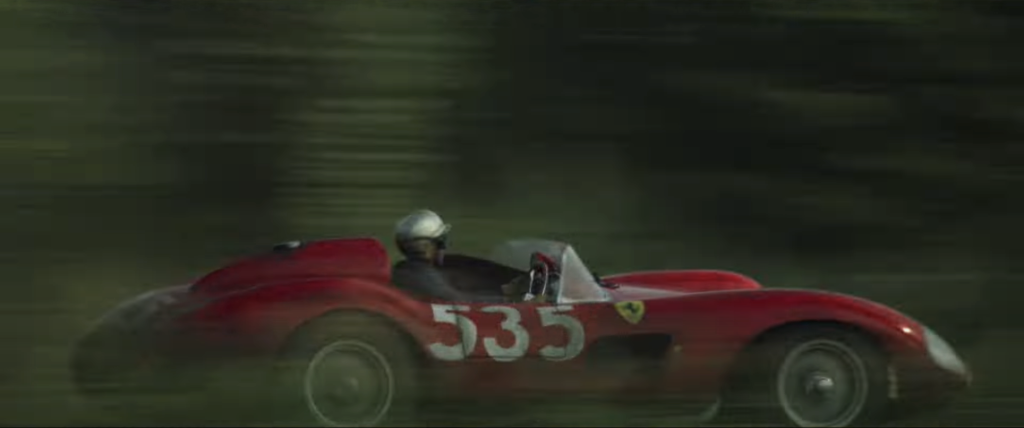
Mann explained that his crew “designed the tubular chassis to receive the body of the car… and they had contemporary drivetrains and they could do 140, 150 [mph], were reliable, and safe.” The powerplants they used for the replicas were four-cylinders cribbed from Caterhams. (The exception here is the 1957 Maserati 250F grand prix race car that makes a cameo during the time test – a very real car that belongs to Pink Floyd drummer and car collector Nick Mason.) At one point in the film, Enzo comments on his newest Ferrari, perfectly articulating both the awe and dread it inspires: “The driver in front will piss his pants when he sees it in his mirror. And when it passes, it has an ass on it like a Canova sculpture.”
The film presents racing as religion. This is not a poetic invention by the filmmakers, as Ferrari is indeed a kind of religion in Italy. In one scene, a priest delivers a sermon about “the nature of metal,” and “how it can be honed and shaped with your skills into an engine with power to speed us through the world.” He posits that if Jesus Christ had been born then, the son of God might have been a “craftsman in metal” instead of a carpenter. This is a Workers Mass, and so the men in the pews are all car-factory workers themselves; though this sermon is clearly written for them, their attention is divided between God and Ferrari: they pull out stopwatches when they hear the sound of the starter pistol in the distance, as Maserati is just beyond the door, seeking to break Ferrari’s speed record.
And the racing scenes do not disappoint. (My only gripe: there could have been more of them.) They place the viewer in the driver’s seat, capturing both the thrill and the horror of racing in this era. A scene late in the storey plays like something out of a war film, somehow both graphically realistic and hallucinatory, as if it’s a nightmare dredged from Enzo Ferrari’s own subconscious. Adam Driver himself described a single-seater as a “moving coffin,” echoing a line delivered by Antonio Sabàto’s Nino Barlini in 1966’s Grand Prix: “Then I go into one of these cars: you sit in a box, a coffin, gasoline all around you. It is like being inside a bomb!”
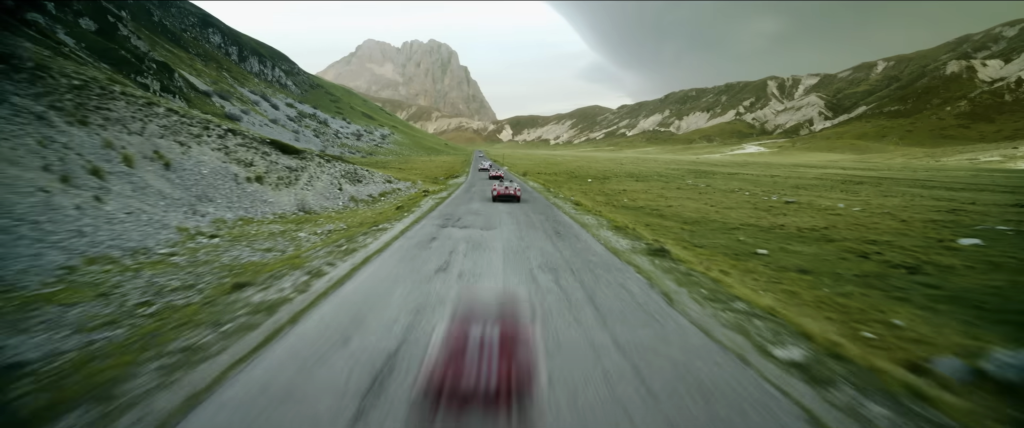
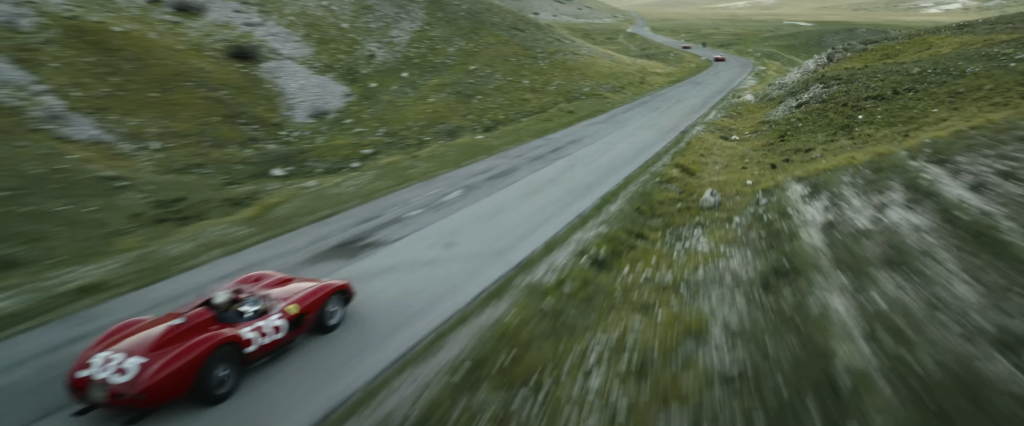
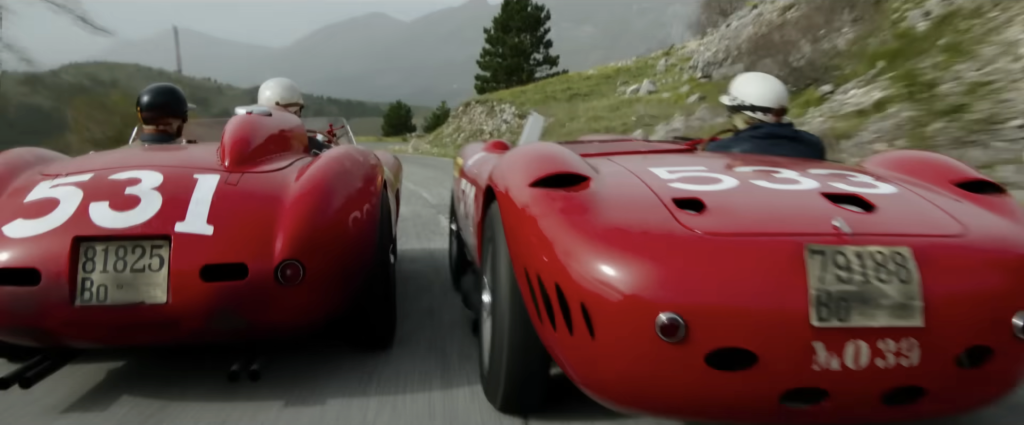
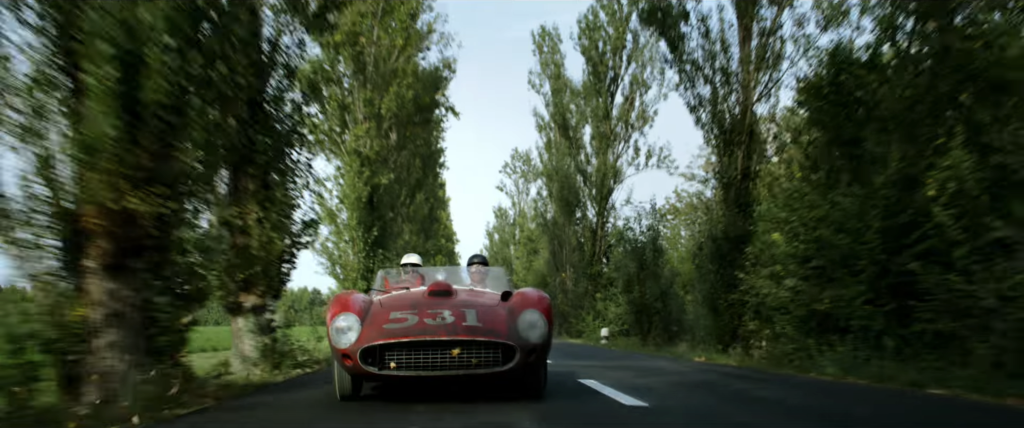
Mann is known for his painstaking attention to detail, and it brings remarkable, noticeable authenticity to the film that the most knowledgeable, finicky racing fan should appreciate. The actors, for example, were all given race car driving lessons. (There were some notable exceptions, like Patrick Dempsey, who plays “silver fox” Piero Taruffi, who is a real race-car driver and did not require lessons, and Ben Collins, who plays Stirling Moss.)
Shooting locations were frequently the actual locations, like Enzo’s barbershop (the man who shaves him in the film is the son of Enzo’s barber), the exterior of the Ferrari house, and the family mausoleum. Even the wallpaper from Laura Ferrari’s bedroom was replicated for the film. And because the cars they fabricated didn’t sound quite right (four-cylinder engines sound nothing like V-12s), production relied on ADR (automated or additional dialogue replacement): When the cars are racing down narrow streets of Ravenna, for example, they duplicated that in a railroad tunnel in the U.K. with a real Ferrari 250.
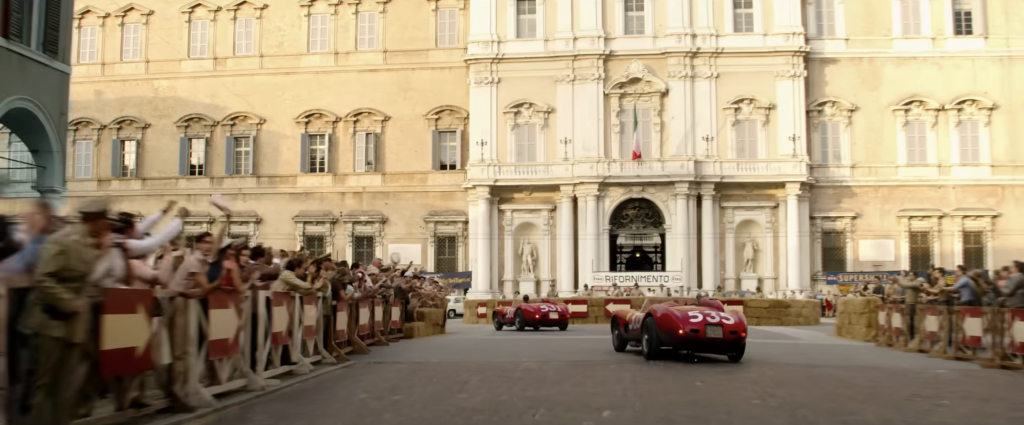
Yet some of the movie’s best moments are its quietest, like when Enzo and Laura separately visit Dino’s mausoleum. Enzo speaks openly with him, while Laura only weeps and smiles, as if she can hear her son’s voice. (This is among the very few moments where Driver’s Enzo allows himself to be vulnerable, to show a crack in his well-constructed façade.)
And then there is a scene that crystallises the film, meaningfully set during an opera, not a race. It is specifically a performance of “Parigi, o cara” from La Traviata, which is intercut with the film’s characters reflecting on memories made bittersweet by the passage of time, by reality and tragedy intervening, while cinematographer Erik Messerschmidt renders the actors’ faces in shadowy darkness like Caravaggio portraits. The film really does feel more like an opera than a traditional biopic; Mann even reuses a bit of the gorgeous operatic score by Lisa Gerrard and Pieter Bourke from his 1999 film The Insider.

Ferrari gives us an intimate look at a man who was consciously unknowable, who maintained an airtight mystique. In the press, Enzo Ferrari is dubbed a widow-maker, “an industrial Saturn devouring his own children.” He often feels more like a man sending his soldiers into battle than a businessman, writing off the deaths of his racers as if it’s simply the cost of war. But Mann attempts to show us that while we saw coldness and dispassion, it was grief that ossified the man’s heart. In addition to the death of Dino he also lost two of his friends at Monza back in 1933 – Campari and Borzacchini – who both died on the same day “in the metal I made,” Enzo confesses. In response, he told himself, “Enzo, build a wall. Or else go do something else.” He built the wall, but their ghosts haunt him nonetheless.
Mann’s and Driver’s take on Enzo Ferrari feels like a reflection of the ethos that people associate with the brand: often at the top of its game yet constantly improving, forever chasing something better, more efficient, more perfect. His race cars are like him, powerful yet fragile, undone by a sticky gearbox, a faulty steering column, an unexpected cloudburst, or just a bit of debris in the road. Il Commendatore was many things: “the Sage of Maranello,” a celebrity, a mythic figure, a martyr, a national treasure, his company regarded as a jewel in the crown of Italy. But the “great engineer,” capable of bringing his foundering business back from the brink, was still a man, powerless to save the life of his own son. With surgical precision, Ferrari identifies and explores the godlike legend figure who is unable to play god when it matters most.
There is no easy, tidy resolution in this film, no hard-won underdog victory as in Ford v Ferrari, no triumphant success storey that one might expect from something lighter like Gran Turismo. Instead, Mann gives us a melancholy, incisive look into a man of contradictions, and into the race-car driver’s paradoxical love of racing: you never feel more alive than when you are speeding along the precipice of death. Ferrari captures the addiction, the exhilaration of being one with a race car, the heady thrill of winning – and the unimaginable cost that it levies. As Enzo Ferrari tells his drivers: “We all know it’s our deadly passion, our terrible joy.”




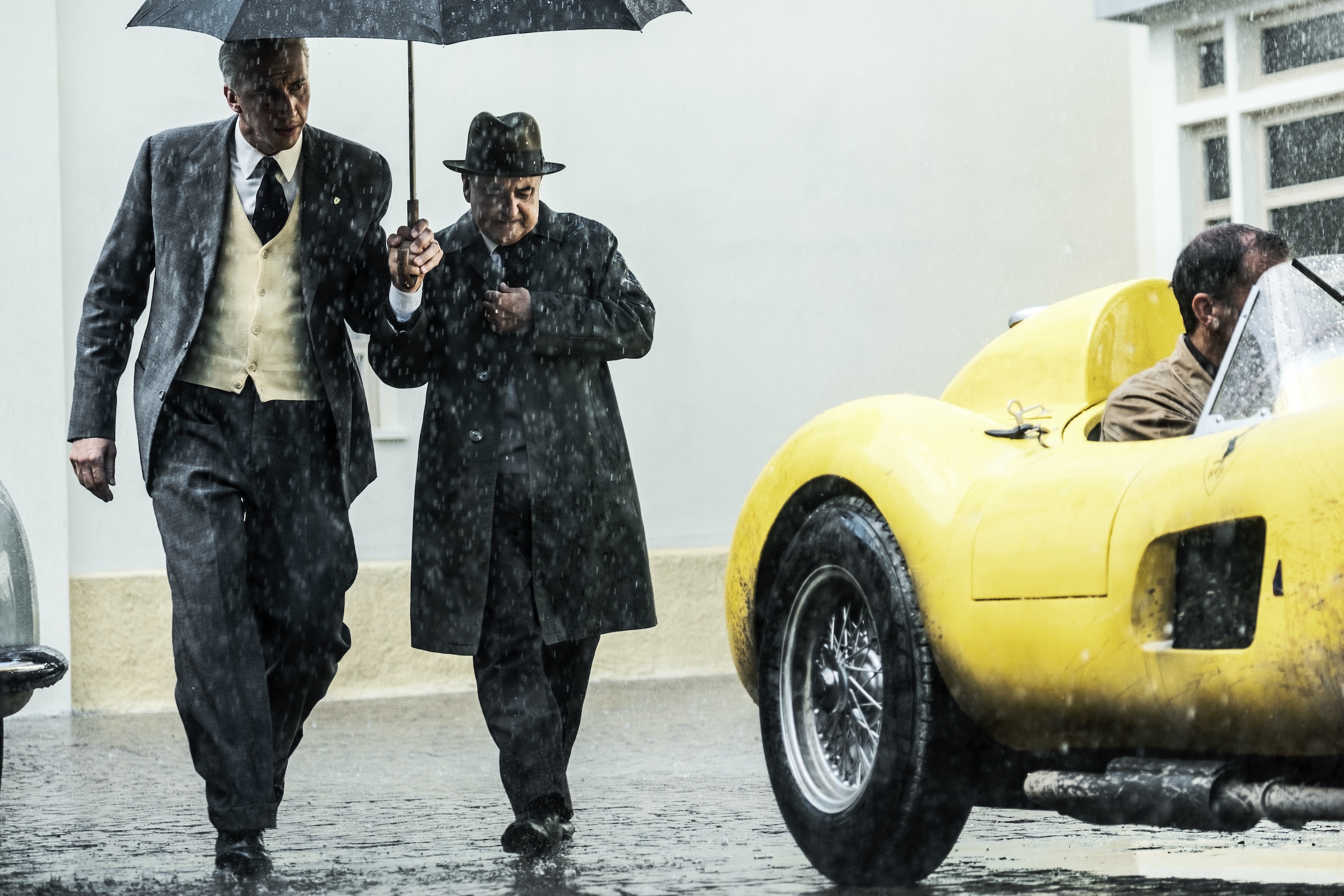






Half decent film which I saw a few nights ago. Better than the one about Lamborghini.
The film someone should make would be about Colin Chapman and Lotus. Now there’s a story to tell whilst there are people still around who knew him personally warts and all!